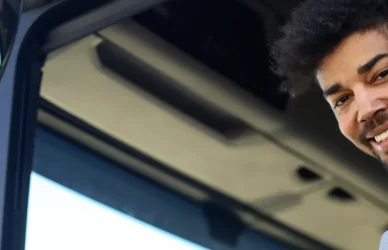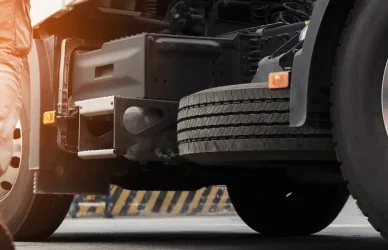Daylight savings came to an end earlier this month. For professional truck drivers this means more time driving in dark conditions, which in turn increases the likelihood of accidents, as reported by The Trucker. Just being aware of the dangers that come with driving at nighttime, as well as the drowsy driving that can accompany driving at night, can help drivers avoid on-the-road accidents.
Accidents can result in serious injury for drivers, and those that happen at night are three times more likely to be fatal, according to data collected by the National Safety Council (NSC). This is due to depth perception and peripheral vision being impaired, as well as increased difficulty in recognizing color. Even the headlights of other cars, and their subsequent glare, can cause challenges while driving at night.
Drowsy driving is also a risk when driving in the nighttime. Millions of drivers in the United States fall asleep while driving, according to a 2017 National Highway Traffic Safety Administration (NHTSA) study. It was also proved in the study that 15% of all crashes that result in fatalities occurred with a drowsy driver operating the vehicle.
If a driver is drowsy behind the wheel, their reaction time is lessened. Taking into account that visibility at nighttime is reduced to only 500 feet with high-beam headlights, further reducing the time a driver has to react. The speeds drivers are maintaining on highways lessens that already abbreviated reactive time.
Nauto, a predictive artificial intelligence (AI) software, realized all the factors funneling into a driver’s safety being more at risk when driving at night. They created a driver-centric AI safety system that works against drowsy driving.
The AI uses predictive technology to alert drivers before a collision occurs and “dramatically [reduce] the frequency of risky behaviors that can lead to collisions.”
Drowsiness can be detected with 99% accuracy through the Nauto software, which gives drivers several additional seconds to react in the face of a possible crash. Their CEO, Stefan Heck, said the goal is to save lives. And he has a personal connection to such accidents; Heck was once struck by a vehicle while riding his bicycle.
“We want to add that extra level of safety on the roads,” Heck said. “We believe in this, and we are continuing to work with manufacturers to get it installed in even more vehicles.”
Increased levels of safety are even more important when daylight savings is beginning and ending. Fatal accidents increase by 6.3% during these times of the year, according to scientific journal Current Biology.
Being behind the wheel while drowsy shortens a driver’s ability to focus on the road, lessens reaction time and inhibits the ability to make good decisions. Nauto’s software alerts the driver when they begin to show symptoms of drowsiness. These include closing eyes and drooping heads. While the software can’t stop the vehicle when these signs are detected, Nauto is still expanding its abilities.
“We are constantly evolving this technology,” Heck said. “It’s all about saving lives.”











